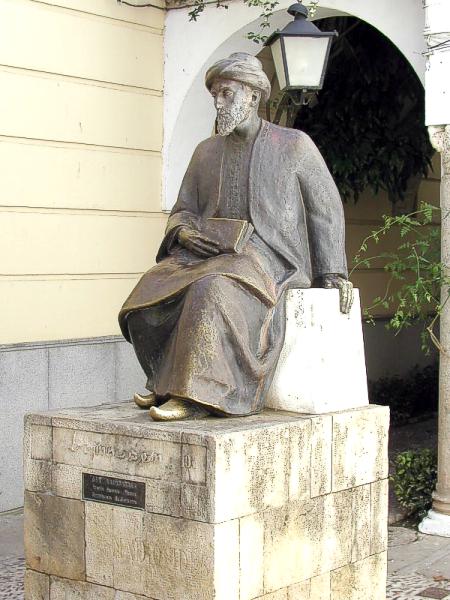
(Wikimedia Commons public domain image)
Continuing the manuscript:
In the ninth century, translation from Greek into Arabic developed rapidly. Since possibly the middle of the eighth century there had been periodic translations, but the ninth century saw the establishment of a systematic, organized effort. The caliph al-Ma’mun, son of Harun al-Rashid, founded a translation bureau called the Dar al-Hikma (“House of Wisdom”), which was presided over by a Nestorian Christian named Hunayn ibn Ishaq.[1] (Hunayn’s son eventually succeeded him in the leadership of the institution.) The Nestorians were useful because they had a foot in both cultures. At the time of the Arab conquests, their native language was Syriac, a dialect of Aramaic. As we have seen, this made it easier for them to understand Arabic. But they were also oriented toward the West, the original homeland of their doctrine, and their most important writings were in Greek. Nestorian intellectuals, therefore, had typically mastered Greek, Syriac, and Arabic, and were perfectly equipped to serve as human bridges over whom the culture of the ancient classical world could enter into the new Arab empire.
However, it was not only Nestorian Christians who worked in the House of Wisdom. The bureau of translation was truly ecumenical and was staffed by Christians, Muslims, and Jews. Such collaboration between the various religious groups continued and was in fact of the greatest importance for the whole enterprise. Thus, for instance, the foremost student of al-Farabi (d. 950 A.D.), one of the greatest of the Arab philosophers, was a Christian. And Moses Maimonides (in Arabic, Musa ibn Maymun; d. 1204), the greatest rabbi and Jewish philosopher of the Middle Ages, served as a court physician in Cairo, where he read and pondered the works of earlier Arab Muslim thinkers and wrote his philosophical books in Arabic.[2]
Later, when Arabic philosophy—for several reasons—lost its own creative spark, it helped to kindle a philosophical flame in western Europe. In this process, the Jews of Spain played a role very much like that played by the Nestorian Christians in the East. Like the Nestorians, the Jews had a foot in both worlds. Their own language was Hebrew, which was close enough to Arabic that they had little problem mastering that language. Yet they were also familiar with Latin. Consequently, they served as the middlemen, the transmitters of Arabic philosophical texts to the West.
[1] Al-Ma’mun’s name is pronounced “Ma’MOON.” The common name “Ishaq” is the Arabic equivalent of “Isaac” and is pronounced “ISS-hak.”
[2] To be precise, Maimonides wrote in the Arabic language but used the Hebrew alphabet. This is just one of many instances from the ancient and medieval periods of using the script of one language to write in another language. It is something that has been ridiculed in the Book of Mormon, whose writers evidently used a form of Egyptian script to write in Hebrew. But it was not unusual.












